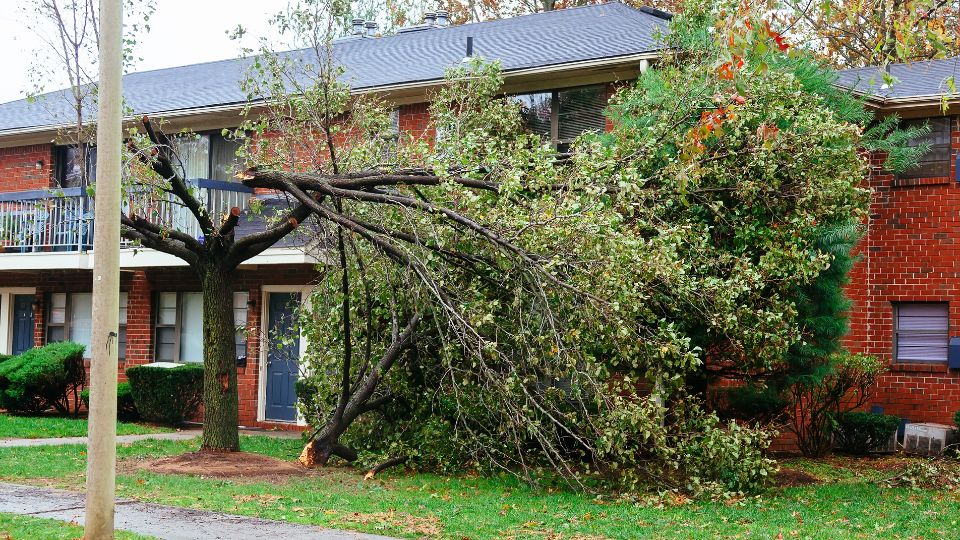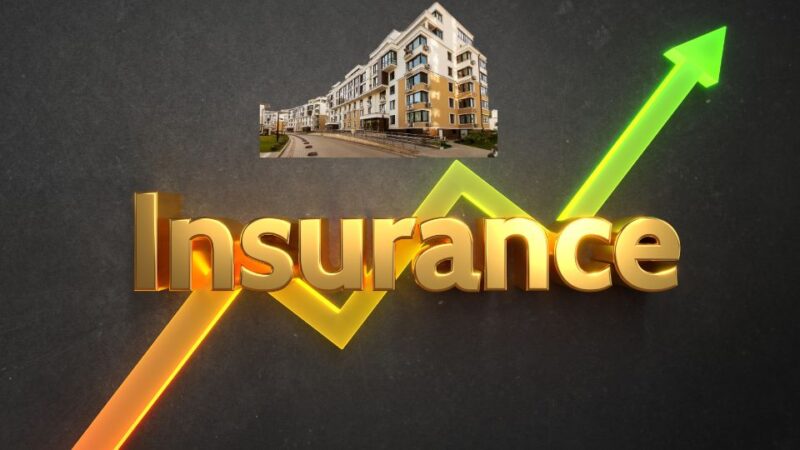Recent increases in multifamily insurance rates are posing a significant challenge that could reshape investment strategies, transaction volumes, and the very sustainability of property ownership in certain regions.
A sharp increase in insurance rates for multifamily properties has emerged as a critical concern, particularly in areas prone to natural disasters. This trend is not only putting pressure on current property owners but also influencing the dynamics of property transactions and financing.
Unprecedented Multifamily Insurance Rate Hikes
Recent reports indicate that multifamily properties have experienced an average insurance cost increase of 26% from 2022 to 2023, with some property owners in high-risk areas facing hikes of 300% to 400%. These increases are far more substantial than the broader commercial real estate market, signaling a unique challenge for multifamily investors and operators.
For example, in Houston, insurance prices per unit per year have surged to $2,500 for some properties. This is, a staggering rise from the historical average of about $300. Such increases are attributed to the combined effects of natural disasters, inflation, and rising property values, which have collectively strained the insurance industry.
This trend is corroborated by national operators reporting an average 26% rise in insurance costs from 2022 to 2023, with extremes reaching 300% to 400% in high-risk areas like Texas, Florida, and Louisiana.
Impact on Multifamily Property Transactions
The escalation of insurance costs directly impacts the attractiveness of multifamily properties as investment vehicles. Higher operating expenses, driven by increased insurance premiums, diminish net operating income (NOI), a critical metric for assessing the value of such investments. This reduction in NOI not only affects the property’s valuation but also influences investor appetite, potentially slowing down transaction volumes.
Prospective buyers are now more circumspect, factoring in the higher cost of insurance when calculating their returns, which can lead to prolonged negotiation phases, reevaluation of investment strategies, or even the shelving of potential deals.
The implications of increased insurance rates extend beyond property transactions, deeply affecting the landscape of financing and loans for multifamily properties. Lenders, recognizing the heightened risk posed by higher insurance costs, are revising their lending criteria. Loan-to-value (LTV) ratios, interest rates, and debt service coverage ratios (DSCR) are all being adjusted to account for the increased operational costs borrowers face.
Multifamily Insurance Rates: Regional Examples
Trepp conducted an in-depth examination of the insurance landscape in Florida and Texas, highlighting the unique challenges each state faces due to its geographical and climatic conditions.
In Florida, known for its vulnerability to tropical storms and hurricanes, the Miami, Jacksonville, and Tampa metropolitan statistical areas (MSAs) saw insurance expenses climb by an average of 24.9% from 2021 to 2022. This period recorded 21 named storms, surpassing the average of 14, while building material costs surged over 31% between 2020 and 2022.
Despite these challenges, the region continued to attract residents, with Miami, holding the highest flood-risk score in the U.S., witnessing the construction of 147 multifamily buildings totaling 36,414 units in 2021. This construction boom accounted for 11.3% of Miami’s market inventory, pushing vacancy rates below 5%.

Texas, on the other hand, is marked by its weather extremes, from intense heat to rare freezing conditions, which significantly affect the state. Events such as the devastating winter storm, which led to a $9.3 billion payout, the “Gorilla” hailstorm in April, and Hurricane Nicholas in September 2021 have pressured insurance companies to reconsider their presence in the state.
Trepp notes that while inflation partially explains the short-term rise in insurance costs, the significant role of extreme weather in altering the insurance premium landscape over recent years cannot be overlooked. The shift of private capital towards more profitable and lower-risk areas might exacerbate this trend, leaving high-risk regions facing even greater insurance challenges.
Related: Frustrated Builders Face Construction Loan Challenges
Rising Liability Claims Adding to the Pressure
In the multifamily housing industry, the realm of liability insurance is entering the early phases of a new market cycle. From an insurance standpoint, liability differs significantly from property insurance. A notable feature of liability claims is their delayed nature; an incident can occur on a property, but it might take a year or even longer before the claim is reported, settled, or paid. This delay between the occurrence of claims and their resolution is a critical aspect of liability insurance.
This situation is compounded by the phenomenon of “social inflation,” where juries are increasingly awarding significant sums for what might be considered routine cases. Such trends have raised concerns among insurers about the sustainability of their underwriting profitability. The uncertainty regarding potential exposures, without significant changes in tort law, suggests that social inflation may persist along its current trajectory.
For apartment owners, this evolving landscape implies that insurers are likely to increase deductibles and retentions. Additionally, owners should anticipate a continuation of rising multifamily insurance rates over the next few years, driven by these underlying market dynamics.
Related: 2023 CRE Loan Originations: A Dramatic Market Dive
Insurance Companies React
The landscape of insurance for commercial real estate, particularly for multifamily properties, is undergoing significant shifts, compounded by decisions from major insurers.
State Farm in a move reflective of the industry’s response to escalating pressures, announced in late May its decision to halt new applications for all business and personal lines of California property and casualty insurance. This drastic measure is attributed to a confluence of factors: historic increases in construction costs that have outpaced general inflation rates, a rapidly growing exposure to catastrophic events, and a reinsurance market facing its own set of challenges.
This trend is not isolated, as evidenced by Allstate’s announcement in November 2022, revealing its strategic exit from commercial insurance markets in five states.
The decisions by State Farm and Allstate underscore the broader industry’s grappling with the realities of heightened risks and rising multifamily insurance rates. These developments signal a potential tightening of insurance availability and affordability for property owners, prompting a need for the market to adapt to these evolving dynamics. The industry’s landscape is clearly being reshaped by these factors, leading to a reevaluation of risk management and insurance strategies among commercial real estate stakeholders.
Related: Understanding CRE CLOs Amid Rising Distress Waves in 2024
Search for Solutions to Rising Multifamily Insurance Rates
Insurance costs for multifamily properties are escalating more rapidly than for any other type of commercial real estate, with reports indicating an average increase of 26% in insurance expenses from 2022 to 2023.
Faced with these challenges, multifamily property owners and investors are exploring various strategies to mitigate the impact of rising insurance costs.
Property owners have several strategies at their disposal to mitigate rapidly rising multifamily insurance rates. Promptly addressing and resolving any insurance losses is crucial, alongside thoroughly documenting preventive measures to avoid future incidents. Demonstrating a proactive stance on risk management can significantly influence underwriters’ assessments.
Practical steps on the property management side include the installation of protective features like anti-hail netting or fire stops above cooking areas. Regular property inspections focused on safety, ensuring adequate lighting, and maintaining stairs, banisters, curbs, and walkways in top condition are essential. A comprehensive loss-prevention strategy not only reduces the likelihood of claims but also makes the property more appealing to insurance providers.

Integrating loss control policies and procedures into renewal discussions is vital. Engaging in direct conversations with insurance carriers about these practices can yield benefits. Being well-informed about how underwriters assess and price risks before the insurance renewal process begins is crucial for securing favorable terms and managing cost expectations.
The industry is also advocating for broader solutions, including potential government intervention to provide relief or stabilize insurance markets, especially in regions most affected by natural disasters. The viability of multifamily investments in these areas depends on finding sustainable paths forward to manage multifamily insurance rates without compromising the affordability and availability of housing.





